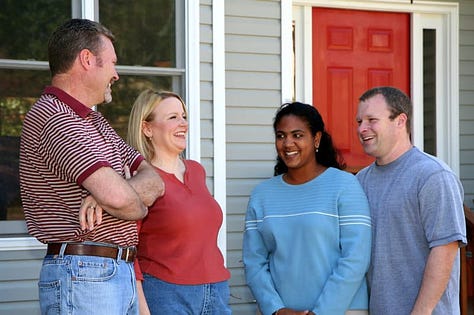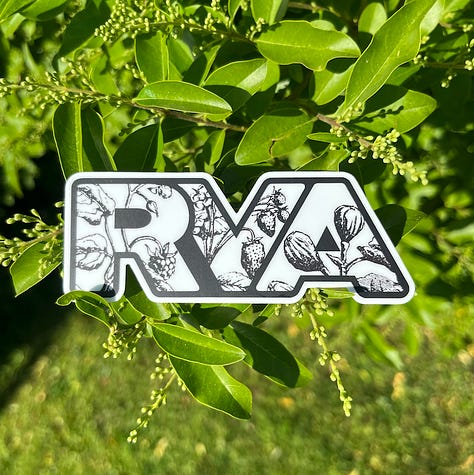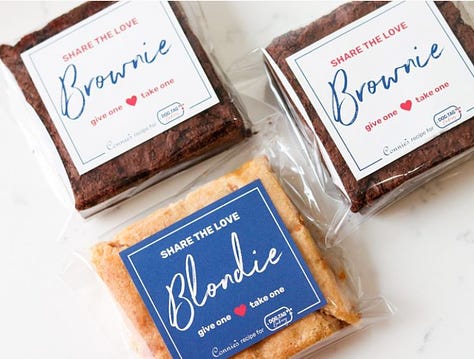Why every town should offer a welcome kit
Unlocking the potential of every community to help new residents feel welcome, connected, and integrated.



Last month, I moved to a new place. Almost immediately, the internal questioning began.
Some of these questions were mundane: When is garbage day? Where should I buy groceries? Could I do 10 sets of bicep curls in the gym without getting laughed at?
Others were more existential: Where could I find my community? What can I contribute to this new place? Can I belong here?
It’s likely that most of us share similar experiences of moving somewhere new. If we don’t have friends or family nearby—and even if we do—it can be a period of great isolation, fear, and uncertainty. Disconnected from our past community institutions and social networks, we’re left asking: where do I begin?
But it doesn’t have to be this way—and towns should lead the charge.
Imagine if every town in America oriented itself toward helping new residents feel welcome and integrated. Imagine if every town committed to connecting neighbors—both new and existing—to one another and the place they call home. Imagine if every town thought of itself as a place for belonging. In this imagined universe, we’d likely feel a lot less alone as newcomers, and a lot more supported as long-term community members.
I believe every town has the potential to realize this vision. And I believe unlocking this potential can begin with a very simple idea: welcome kits for new residents.
The idea of a welcome package is standard practice for organizations looking to welcome newcomers. Virtually every residential college offers a welcome packet to new students. Most community-based organizations—from your YMCA, to your local house of worship—provide welcome materials for new members. Even local tourist boards, hotels, and Airbnbs will provide welcome guides for short-term guests. Towns should at least be as welcoming to their long-term neighbors as they are to their short-term visitors!
What could such a welcome kit look like? The city of Canning, Australia offers a promising place to start.
Canning’s “Welcome Pack” models a holistic approach to community welcoming and integration. Not only does it include information on the basics (e.g., community services and community safety), it also describes how new residents can become involved in the community. Canning’s “Community Events” section highlights opportunities to attend upcoming events in the city. The “Community Places” section lists all of the public third places in the city, including parks, libraries, and community centers. Its “Volunteering Opportunities” section describes how new residents can become volunteers with the city and its partner organizations. The only major thing I would add is information on community organizations, neighborhood groups, and houses of worship with which to get involved.
Welcome kits can go beyond the purely informational and help new residents get a feel for the culture of their new place. The town itself could donate a trinket that typifies their community. For example, Richmond, VA could give one of their famous “RVA” stickers to every new resident. A beloved local gathering place—like Dog Tag Bakery in Washington, DC—could donate a brownie or bag of coffee. A local artist or photographer could contribute a postcard that depicts a local, culturally resonant scene. In my hometown, Wayne, NJ, it would probably be a painting of a taylor ham, egg, and cheese sandwich.



Welcome packages should be delivered in-person and in-print—both for homeowners and renters—and made available online. The substance of a designed, printed welcome kit has the potential to encourage greater initial engagement with the resource, and it could become a touchstone for new residents to return to as they integrate into their new communities. At the same time, towns can create and continually update online versions of the welcome resources, which could serve as an active resource for new and existing residents alike.
These welcome kits have the potential to shift how new residents relate to their new neighbors and community. Practically, the information on community events, organizations, and volunteer opportunities can build momentum for new residents to get involved locally. These welcome packages can even serve as a gentle nudge for new residents: in our community, we expect you to participate. These kits also have the potential to help new residents feel an immediate sense of welcome in their new homes. By receiving the kit, newcomers would be receiving the message that they are noticed, supported, and can belong in this new place. All of these benefits can be provided for less than $10 per new resident for design, print, and distribution—a relatively low cost for cities and towns.
By now, you’re probably thinking, “cool, but this isn’t nearly enough.” And you’re absolutely right. Welcome kits aren’t enough to help new residents feel like they belong in their new homes. They aren’t enough to help new residents become integrated as active participants in their new communities.
Welcome kits are a starting point, not an end point.
Towns can and should build on this resource to connect neighbors—both new and existing—to one another and to their communities. For example, towns could create local “Welcome Points” and host activities fairs for new neighbors to learn more about how to become engaged and connected. They could create roles for community ambassadors or neighborhood captains, who can deliver the welcome kits and warmly welcome new neighbors to the city. They could even offer micro-grants for neighborhood groups to host events that foster neighborhood connection—from block parties, to community dinners, to neighborhood betterment projects.
The throughline across all of these activities is one central question: how do we cultivate a community where everyone can belong?
For newcomers, belonging often starts with a warm welcome. And that warm welcome can begin with a simple welcome kit.







This issue of Connective Tissue resonated so deeply with me - it reflects a practice that I've seen on the ground in Ukraine and Poland since the full-scale Russian invasion in 2022. Humanitarian aid organizations give out "life boxes" to new-comers to their communities, often internally displaced refugees fleeing the war in the east. The life boxes reflect the scarcity of war, offering items like noodles, baby formula, or razors, but the core act - to share what you have with your new community member, is a powerful one.
Something we tried a while back in southwest Ireland is a form so this is super to see.
One contribution... there is a real logic for local employers to fund this sort of welcome pack initiative so as to increase retention of new staff relocating to the region, particularly for the partner who may struggle even more to integrate at the beginning while the other goes to work everyday. It is a small fraction of the recruitment and onboarding costs.